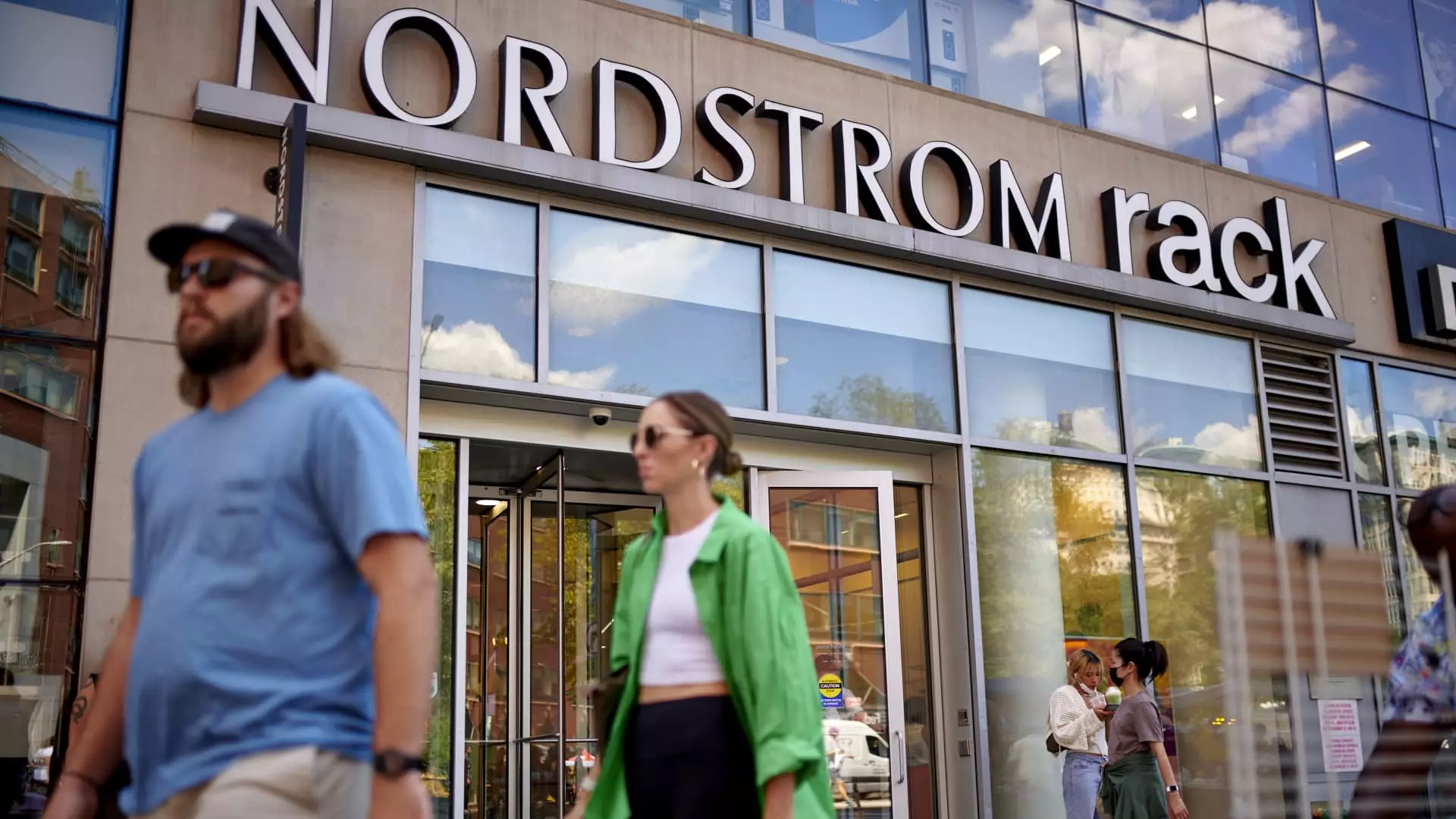On Tuesday, Nordstrom revealed its second fiscal quarter earnings, showcasing a robust performance that exceeded Wall Street’s forecasts. This comes as a surprise, indicating that the Seattle-based department store is progressively enhancing its operational efficiencies and cost management strategies. The earnings report highlighted an adjusted earnings per share (EPS) that was notably 25 cents higher than anticipated, presenting a figure of 96 cents, which was substantially above the projected expectations of 71 cents. This achievement underscores the company’s effective response amid a tightening retail environment.
However, the optimism was tempered by a cautious outlook for the remainder of the fiscal year. The retailer forecasted adjusted EPS between $1.75 and $2.05, a slight upward revision from an earlier prediction of $1.65 to $2.05. Similarly, Nordstrom’s sales forecast reflected a conservative stance, projecting a potential dip of 1% or a slight growth, diverging from a previously more optimistic expectation of a 2% decrease to 1% growth. These figures underscore the mixed dynamics of the current marketplace, illustrating a fine balance between achieving short-term gains and addressing longer-term challenges in consumer spending.
Reflecting on the quarterly results, CEO Erik Nordstrom expressed cautious optimism, signaling confidence in the brand’s momentum. He stated, “Our second quarter results were solid, and we’re encouraged by the continued top-line strength in both banners and the progress we’re making.” This sentiment implies a strategic focus on sustaining growth while navigating external pressures, an essential approach as inflation and high-interest rates continue to impact consumer behavior.
After the announcement, shares surged approximately 5% in after-hours trading, mirroring the positive reception from investors despite the tempered guidance. This response indicates that while Wall Street is wary of potential risks, there is also acknowledgment of Nordstrom’s resilience and long-term vision.
Nordstrom reported a net income of $122 million for the three-month period ended August 3, translating into a 72 cents per share profit—a decline when juxtaposed against the previous year’s income of $137 million. Excluding exceptional items linked to supply chain disruptions, the company’s adjusted earnings reflect a strategic recovery, with sales rising to $3.89 billion, marking a 3.4% increase from $3.77 billion year-over-year. However, it is noteworthy that revenue fell short of expectations, highlighting the complexities retailers face in a fluctuating market landscape.
Comparable sales rose by 1.9%, with gross merchandise value (GMV) increasing by 3.5%. The growth in GMV raises questions regarding whether these figures were primarily driven by price increases or an actual uptick in sales volume. With inflation persisting and discretionary spending declining, retailers like Nordstrom are implementing cost-cutting measures and operational enhancements to safeguard profitability. This captures the broader trend that has characterized the retail sector, as companies adapt to shifting consumer priorities.
In line with its strategic goals, Nordstrom has committed to strengthening its supply chain operations. Notably, the company reported a 5% improvement in the delivery speed of online orders. Enhanced logistics play a crucial role in driving customer satisfaction, leading to reduced return rates—key variables for any retailer striving for success in a competitive landscape.
A pivotal component of Nordstrom’s strategy has been the expansion of its off-price segment, particularly through Nordstrom Rack. The performance of Nordstrom Rack illustrates a turnaround, with sales jumping 8.8% and comparable sales rising by 4.1%. This reaffirmation of the off-price model has proven essential as consumers increasingly gravitate toward affordability in uncertain economic times. To bolster this initiative, Nordstrom has proactively opened 11 new Rack locations with ambitions to add at least 22 more by year-end, aiming to capture a larger market share in the off-price arena.
As Nordstrom navigates this fluctuating retail environment, its recent earnings report conveys a blend of resilience and strategic foresight. While the retailer celebrates growth in certain segments, the cautious guidance reflects an understanding of the complex consumer landscape influenced by economic factors. The ongoing initiatives to enhance supply chain efficiency and expand the off-price business provide a hopeful narrative of adaptability and strength. For investors and stakeholders alike, Nordstrom’s proactive approach in a challenging market may serve as an indicator of its long-term viability and commitment to evolving alongside consumer needs.

